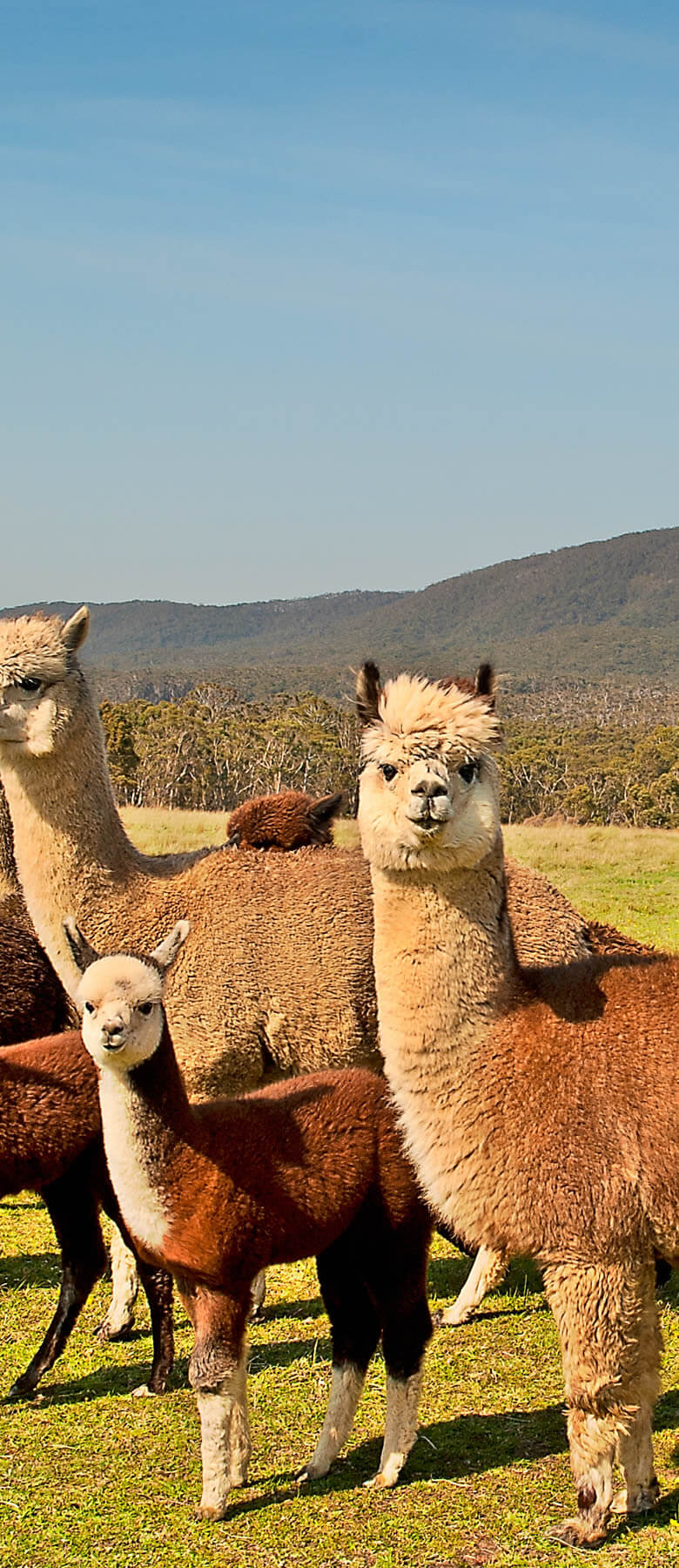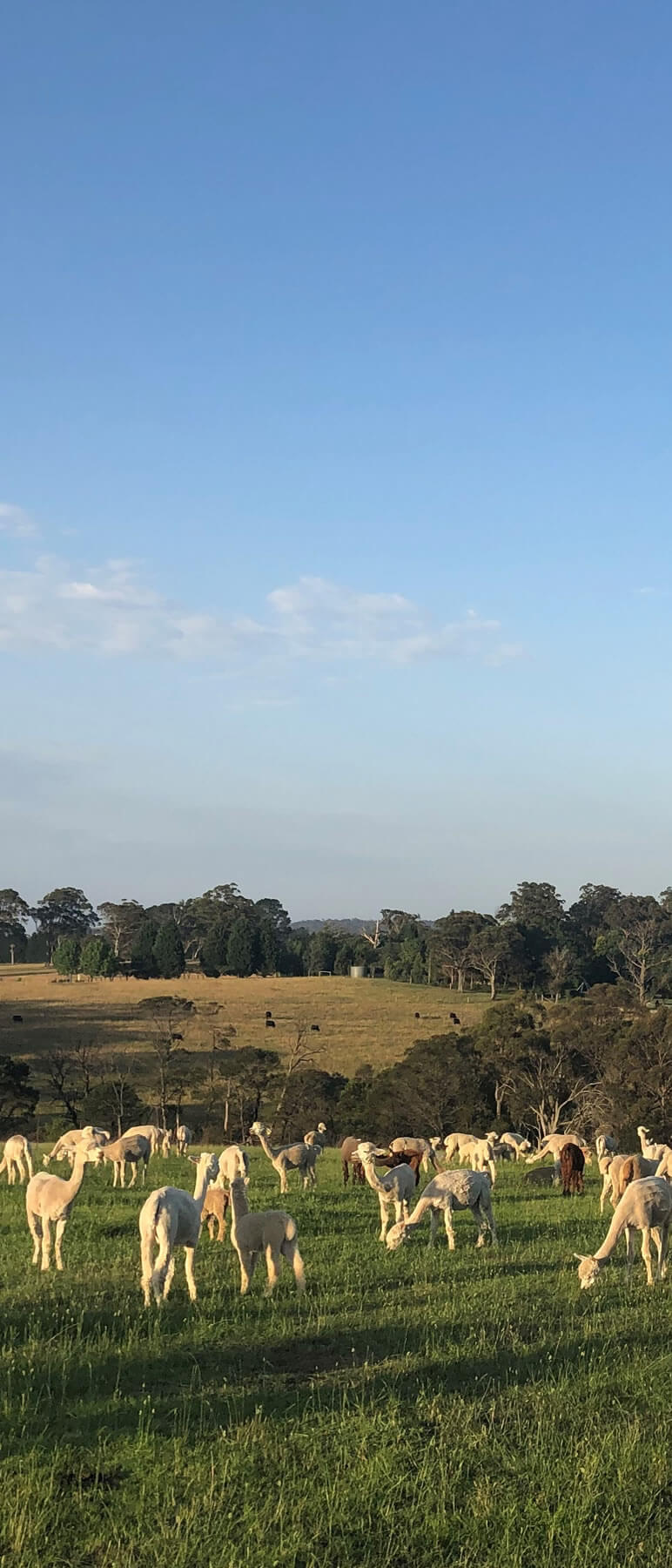NLIS for alpacas
The National Livestock Identification System (NLIS) is Australia’s system for the permanent identification and lifetime traceability of livestock. It has three basic parts:
- a property identification code (PIC) for places where livestock reside,
- an individual animal identifier, such as an ear tag with a microchip inside, and
- a web-based database managed by the Integrity Systems Company (a subsidiary of Meat and Livestock Australia) that records information on livestock movements.
The NLIS is part of a national approach to agricultural disease control, biosecurity, food safety, and market access. It has the capacity to improve response times for traceability of livestock and disease control. This offers both animal welfare and economic benefits to Australian agriculture.

Getting Started with NLIS
The AAA received a substantial grant from the Department of Agriculture, Fisheries and Forestry through the Livestock and Animal Traceability Development, Implementation, and Improvement Grant Program to support the alpaca industry’s inclusion into the NLIS. This grant has enabled research to be undertaken with AAA membership which has informed the development of industry-specific resources to meet the needs of alpaca producers and their clients.
The handbook, Count Us In: Alpacas and the NLIS, is a resource for all alpaca owners. It explains what the NLIS is and provides practical information to get started in tagging alpacas and recording alpaca movements on the NLIS database.
[Link to handbook pdf here]
A series of video resources have been made to help all alpaca owners understand and be a part of the NLIS:
Count Us In – Spotty the alpaca gets sick after attending a show. See how being part of the NLIS changes the outcome and slows the spread of disease.
Which Tag Do I Use? – explains the different types of tags used for alpacas in the NLIS and how the colour system works.
How to Tag Alpacas – demonstrates how to safely and correctly apply a NLIS tag to your alpaca’s ear.
The AAA also has a free handout that you can provide to people buying alpacas from you. This explains the NLIS tag in their alpaca’s ear and helps them register their PIC with the NLIS database.
You can download and print copies here: [Link to client information sheet pdf here]
Ordering NLIS Tags
Anyone who owns an alpaca can use the NLIS. There is no charge for setting up a user account on the database and recording movements. The only cost is for the NLIS alpaca tags and for an applicator (if you don’t already have one).
All NLIS tags are electronically coded for a single species. It’s important only to use alpaca tags for alpacas, and not to use cattle, sheep, or goat tags.
There is a minimum order for NLIS tags. Members with smaller tag requirements can use yellow-coloured tags that will be applicable for all birth years. Pink post-breeder tags must be used for all alpacas that were not born on your current PIC.
Order your tags here: https://alpaca.asn.au/alpaca-tag-order-form/
The Alpaca Industry Transition
The AAA has been working towards alpacas joining the NLIS since 2004, in response to member requests to prioritise animal health and biosecurity. In 2023, the national NLIS committee approved the implementation of two different NLIS devices for alpaca based on results from a tag testing process undertaken with the cooperation of the alpaca industry.
At present, alpacas are a voluntary part of the NLIS. The alpaca industry’s proactive stance and commitment to inclusion has been commended by the authorities responsible for animal health and agriculture.
The IAR / eAlpaca system does not include traceability. It only tracks the ownership change of registered stock. eAlpaca will continue to be the AAA’s national breed registry and show system. It has been updated to include NLIS numbers.
The NLIS database is used to record alpaca movements, in addition to include alpacas owned outside of the member’s registered database. PIC numbers and waybill’s will still be required for livestock movements, in accordance with the relevant State and Territory legislation that apply for the geographical locations where the movements occur.
A phased approach means that IAR tags will still be eligible for AAA shows and industry events in the short to medium term. The supply of new IAR tags ceased in February 2024.
Some state government representatives have expressed preferences for the expansion of a mandatory NLIS. Legislative change is not usually a fast process, and the AAA will monitor changes on a state-by-state case.
The industry transition will proceed in accordance with the business rules agreed to by the AAA in July 2023:
NLIS Alpaca and Llama Business Rules_July 2023
Using the NLIS database
Information on using the NLIS database
How to – Move livestock in the NLIS Database
How to conduct-a-transfer-correction in NLIS


